The events of the Joker killer who came calling at the "Fabeltjesland" (fairyland) crèche (daycare) took a twist into the phantasmagoria between reality and cinema at one specific temporal spot in the news.
Perhaps you caught it too?
The police arrested the assumed killer, who worn makeup like Heath Ledger's Joker from The Dark Knight (Gelder = Ledger). Then they placed him in custody in Bruges.
What? A joker kills kids in a daycare nursery named "Fabeltjesland" and the authorities take the supposed baby killer to the "fairytale-like" city of Bruges.
My stream-of-consciousness flowed roaring along much like the rumblings heard in the River Dender. Hairy waters, indeed.
The 2008 movie In Bruges served as a flashpoint, instantly, for me. I had to re-visit this cinematic masterpiece.
The film stars Colin Farrell (as Ray), and he won the 2008 Golden Globe Award for Best Actor in a Musical or Comedy for his role. Brendan Gleeson, who was also nominated, is Farrell's hitman partner (as Ken) in hiding, with Ralph Fiennes (Harry Waters, yes, pay attention throughout this film) as their mobster boss.
Ray's quick girlfriend, Chloë (Claacémence Poaacésy) and the little person movie-within-the-movie actor, Jimmy (Jordan Prentice), are important too. The film takes place, needless to say, within the Belgian city of Bruges, which is perhaps the film's other most significant character.
Belfry, the belltower (!), in Bruges.
For anyone who has watched In Bruges, in depth, you will appreciate the various levels that screenwriter Martin McDonagh has embedded into this film. He both wrote and directed it, so he seems to have known what he wanted us to see. I think there's even more there too. Obviously, the man is a genius, which has already been proven from his plays. For filmgoers and critics, his full-length movie screenwriting and directing debut may be appreciated more and more, with each repeated viewing.
But before I mention some symbolic items of note within In Bruges, let me bring your attention to the film's biographical overlap with Heath Ledger. The film's acclaimed Anglo-Irish playwright Martin McDonagh is the brother of John Michael McDonagh. The two lads use to have writing contests of their own making.
Paul Byrnes' powerful Australian review of In Bruges shares biographical insights.
"Martin McDonagh is living proof of the power of Australian television soaps. That is what he watched every day during the year of intense writing that produced his first six plays," writes Byrnes in The Sydney Morning Herald.
One can reflect with wonder on parts of people's biographies.
Byrnes continues: "McDonagh is the London-born son of Irish parents. They went back to the west of Ireland when he was 16 (about 1986). He and his brother stayed in London, visiting their parents during the summers. In London the two brothers lived mostly on the dole, challenging each other to writing competitions. They would watch Australian soaps in the morning, then go to separate rooms to write for the rest of the day."
What resulted was rather remarkable. Martin produced two trilogies: the Leenane trilogy, and the Aran Islands trilogy. His brother, John Michael McDonagh, today, we know, adapted Robert Drewe's book for the later film version of Ned Kelly.
Ned Kelly is an Australian film directed by Gregor Jordan. The movie portrays the life of Ned Kelly who was a well-known bushranger in Australia, and is mainly based on Robert Drewe’s book Our Sunshine.
And who starred as Ned Kelly in that film? The poster tells the story, doesn't it? Or your memory of that film may? The answer is Heath Ledger. There, in one short leap we are back to Ledger, and the whole continuing synchrometaphor that is In Bruges.
More from Byrnes: "McDonagh is a huge fan of Nic Roeg's classic 1973 film Don't Look Now, which was set in Venice. That film was about a couple grieving after the death of a child; in a strange kind of way, that's also the subject of In Bruges."
(Colin Farrell's been "here" before, so to speak. The Irish feature film Intermission, starring Colm Meaney and Colin Farrell, references Don't Look Now's chase of a small figure in a red coat several times in that film.)
In Bruges's homage to Don't Look Now is a thread in the film in various ways, like the hints, now and then, of a child jumping in the square, dressed in red, or in the movie's final chase scene among the canals, old buildings, and such. McDonagh even writes it into the dialogue.
There's a scene when Ray is meeting Chloë, for the first time. Chloë says the Belgian film that is shooting there is like "Nic Roeg's Don't Look Now."
The film-within-a-film is said to have dream sequences, and the costumed fairies, trolls, and all are shown. Jimmy is one of the characters being filmed in that Don't Look Now-like motion picture or "Euro-trash," as his character calls it. (For recent links I've made between The Wicker Man and Don't Look Now, click here.)
McDonagh is hiding most all of this in plain sight.
And here, now, sitting literally, in Bruges today is Kim de Gelder, admitted killer of children in a fairyland daycare in Belgium.
In Bruges has a scene showing the two lead characters visiting an art museum. Byrnes comments on this, as has a lot of movie critics. "The second primary influence is a painting - The Last Judgement by Hieronymus Bosch. The two men look at it in a museum, musing on the meaning of hell and purgatory," notes Byrnes.
But does anyone notice what painting the film shows right before The Last Judgement at the Groeninge Museum? It is one with the vivid scenes of at least two decapitations. Kim de Gelder's killing of a boy and a girl, plus their caregiver, in Dendermonde was proceeded, in reality, by the decapitation at Virginia Tech. The Commonwealth of Virginia beheading also served as a harmonic link to the last wave of killings that occurred in the fall of 2006 at Dawson College (by Kimveer Gill) and the Amish school (among others), seemingly ending in the spring of 2007 at VA Tech.
In Bruges, at its core, it is about the killing of the "little boy," a phrase often stated that serves as a sort of framing around the entire tale. Reality and fantasy, the news and movie fiction, merge back and forth with In Bruges. And sitting in Bruges was Kim de Gelder after the fairytale daycare killings.
Ken: [looking at a surreal Bosch painting] It's Judgment Day, you know?
Ray: No. What's that then?
Ken: Well, it's, you know, the final day on Earth, when mankind will be judged for the crimes they've committed and that.
Ray: Oh. And see who gets into heaven and who gets into hell and all that.
Ken: Yeah. And what's the other place?
Ray: Purgatory.
Ken: Purgatory... what's that?
Ray: Purgatory's kind of like the in-betweeny one. You weren't really shit, but you weren't all that great either. Like Tottenham.
[pause]
Ray: Do you believe in all that stuff, Ken?
Ken: About Tottenham?
What about Tottenham?
The down and out north London location may be a sort of Purgatory to folks there, and certainly in history it is known for a notable mirror of this movie.
The Tottenham Outrage was the name given to an armed robbery and double murder in Tottenham, north London on January 23, 1909. Two Latvian anarchists, both armed with pistols, stole the wages as they were being delivered to Schnurmann's Rubber Company on Chestnut Road, almost literally across the street from the Tottenham Police Station.
In their attempts to get away the two robbers, Paul Hefeld and Jacob Lepidus (or Lapidus), started a chase and shooting spree that resulted in two deaths, police officer William Tyler and a 10-year-old boy named Ralph Joscelyne.
The robbers fired more than 400 bullets as they were being pursued along a river bank, through a marshy area, and among old buildings. When they were cornered, they turned the guns on themselves, dying by suicide.
The "Outrage," whether Martin McDonagh knew it or not, sounds an awfully lot like In Bruges. Finally, in a moment of one can start a circle, beginning anyway, the Tottenham Outrage events were commemorated long ago in a silent film.
Clearly, McDonagh knows and loves film.
In Bruges, Farrell's character is out of the hotel room, and Gleeson's Ken is watching a small television, that is playing Touch of Evil (1958). (The civil rights classic was written, directed and co-starred Orson Welles.) What is shown is the famed three-minute long continuous opening take at the beginning of Touch of Evil, where a bomb is placed in a car. During this In Bruges scene, Harry (Ralph Fiennes) has a long conversation with Ken (Brendan Gleeson) about the fairytale that is Bruges, murders, and suicides. Surreal.
The film travels into darkness and back in the fairyland and the so-called "shithole" of Bruges, depending on your point of view. Murder, yes, is there, but more subtly and yet overtly is suicide.
The use of "little people" in the dialogue and in character in the movie is brilliantly strategic, actually. This basically turns on a copycat effect/suicide cluster discussion that Ray seems to be having mostly as an internal dialogue, which he externalizes with Jimmy and Chloë.
===
Ray: A lot of midgets tend to kill themselves. A disproportionate amount, actually. Hervé Villechaize off of "Fantasy Island." I think somebody from the Time Bandits did. I suppose they must get really sad about like... being really little and that... people looking at them, laughing at them, calling them names. You know, "short arse". There's another famous midget. I miss him but I can't remember. It's not the R2D2 man; no, he's still going. I hope your midget doesn't kill himself. Your dream sequence will be fucked.
Chloë: He doesn't like being called a midget. He prefers dwarf.
Ray: This is exactly my point! People going around calling you a midget when you want to be called a dwarf. Of course you're going to blow your head off.
===
Ray is talking of a certain level of reality here, at least in terms of the elementary facts, but not in terms of the motivations, perhaps, which may have more to do with his own projections.
Hervé Jean-Pierre Villechaize (April 23, 1943 - September 4, 1993; pictured above) was a French actor who achieved worldwide recognition for his role as Mr. Roarke’s assistant, Tattoo, in the television series "Fantasy Island" (1978 - 1984). He was also well known for playing the evil henchman Nick Nack in the James Bond film The Man with the Golden Gun.
In the early morning hours of September 4, 1993, Hervé shot himself at his home in the Los Angeles area, and died later that day as a result of his injuries.
Is there a little person actor in Time Bandits who has died by suicide, as Ray mentions? Yes, actually, there is.
Time Bandits is a 1981 fantasy film, produced and directed by Terry Gilliam. It starred several little people or dwarfs.
David Rappaport (above) played "Randall" in Time Bandits. David Stephen Rappaport (November 23, 1951 – May 2, 1990) was an English actor, one of the better known dwarf actors in television and film. At one point in his life, he became a resident of the squatter “nation” of Frestonia, acting as Foreign Minister under the name David Rappaport-Bramley - all inhabitants adopted the surname "Bramley," so in case the Greater London Council were to succeed in an eviction, they would have to rehouse them as one family.
On May 2, 1990, Rappaport died by suicide, shooting himself in the chest at a park in the San Fernando Valley, California, with a .38 calibre revolver he had bought 15 days earlier. His body was returned to the UK, and he was buried in a Jewish cemetery in Waltham Abbey, Essex.
Just before his death, he had been cast and began filming for the role of Kivas Fajo in the "Star Trek: The Next Generation" episode “The Most Toys.” Scenes he had completed were later discarded, when actor Saul Rubinek was hurriedly brought in by producers to replace Rappaport and complete the episode. Rappaport’s death and the accident which left Jack Purvis, his co-star, a quadriplegic were the main reasons why Terry Gilliam decided to shelve the intended sequel to Time Bandits, as their characters were two of the most heavily featured in the film.
Ray, during his dwarf suicide monologue In Bruges, mentions the actor who played R2-D2, as still being around. Indeed, Kenneth "Kenny" Baker (born August 24, 1934; above) is still alive. The British dwarf actor and occasional musician, known as the "man inside R2-D2" in the popular Star Wars film series, was also in Time Bandits.
A third suicide victim is alluded to, but the person's name can't be remembered by Ray.
Perhaps this was a play on "never forget the 5th of December," the date the third dwarf killed himself?
Michael Gilden (above) was an American actor (with dwarfism) born September 22, 1962, in Los Angeles, California, who died on December 5th, in Los Angeles, California.
Gilden, a familiar face in recent years, performed in a variety of television series and film including, “NCIS,” “Charmed,” “CSI: Crime Scene Investigation,” “Family Law,” “Cybill,” as well as a role as an Ewok in the film Star Wars Episode VI: Return of the Jedi. In Pulp Fiction, Gilden played the Phillip Morris Page at Jack Rabbit Slims.
Besides being an actor, Gilden was also a stock broker.
He married the now-famous short-stature actress Meredith Eaton ("Family Law," "Boston Legal") on May 20, 2001. He had a previous marriage to a woman named Elena Fondacaro, Verne Troyer's manager. Gilden and Eaton remained together until his death in a suicide by hanging (credit: Emps) at his Los Angeles home on December 5, 2006.
Little people are just people and don't seem to kill themselves at a higher rate than the general population. But In Bruges is merely a movie, right? And the dialogue was placed in the mouth of a murderer. One measures a circle, beginning anywhere, correct?
The humor-filled, balanced, horse-tranquilizing dwarf in In Bruges is Jordan Prentice (born January 30, 1973; pictured at the top of this posting), a Canadian actor. When he was 13, he began his film acting when he played Howard the Duck, in the movie of the same name. Perhaps it is fitting that Prentice (playing "Martin") also most recently starred in Weirdsville (2007). Part of the plot is about dumping a body in the basement of a drive-in movie theater where a satanic cult performs ritual sacrifices.
[Upon seeing Martin, the dwarf mall security guard]
Treena: That's so cute!
Martin: Something funny?
Treena: [talking in a little kid's voice] Hi! Who are you supposed to be? You're like the little chief of police of Munchkin Land or something!
Martin: [sarcastically] A Wizard of Oz joke. That's very original. I never hear those.
If we find ourselves going further into Oz (an alternative name for Heath Ledger's Australia, I must note), then we shall be going down that yellow brick road for some time. Enough for us to have visited Bruges today.
Children being killed, dwarfs, suicides, fairy tales, chase scenes through cobblestoned narrow streets, little people in hoods, canals, masks, and a confessed killer sitting in Bruges. What is real and fantasy, film or breaking news?
It all merges into a mind-boggling vortex that would make even a seasoned psychiatric professional question someone telling him these events were actual versus the creations of merely magical thinking.
Wiki-sources, regarding various short-stature actors mentioned:
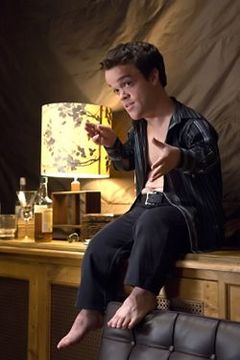
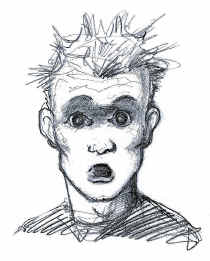
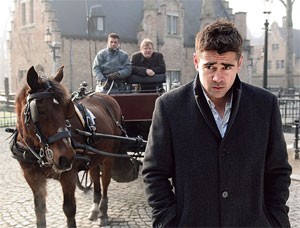
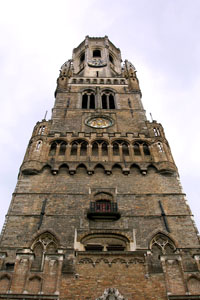
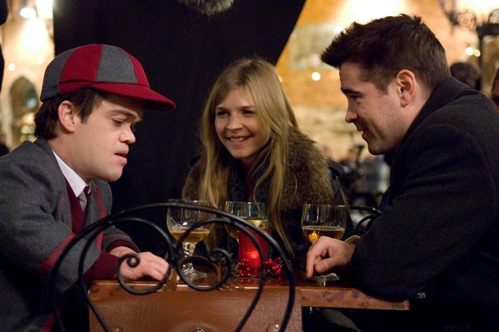
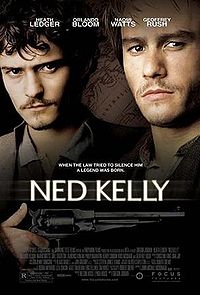
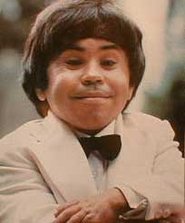
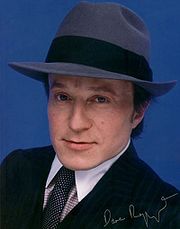
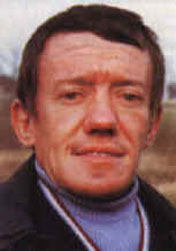
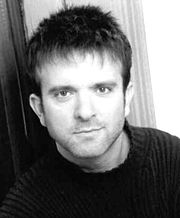
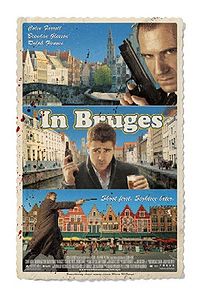

20 comments:
A couple of things that strike me:
Michael Gilden appeared in the CSI episode "A Little Murder" in which the character he plays kills a man by hanging him and then (if I recall the details correctly) he hangs himself. There were rumours that Gilden's suicide was by hanging (I am unsure if this was ever confirmed but I notice it is in his IMDB bio). Which resonates with the photos of Heath Ledger from the Imaginarium set.
In fiction the court jester (another name for joker) is often shown as being a dwarf. I am unsure how common this actually was, but some of the most famous have been, like Jeffrey Hudson the "Queen's Dwarf" (he was presented to the Queen baked in a pie!! His life story is amazing). The travelling jesters would transform into the commedia dell'arte and on to become Punch and Judy. There is also Perkeo the dwarf-jester of Heidelberg, who Victor Hugo claims was the result of the comprachicos' dwarf-making process, as described in his novel The Man Who Laughed (the character Gwynplaine from the book was an inspiration for the Joker, and more specifically the slit-mouthed theme appearing with Heath Ledger's Joker). I was amused to note that the comprachicos legend is mentioned in Bruce Chatwin's book In Patagonia.
Great post. I am intrigued by the dwarf used in theater as a "mini-me" - a child-like character not in full control of his intellect or ego, which allows his subconscious to speak "through" him. We see this in Fantasy Island's Tatoo (Villechaize) who dresses exactly like Ricardo Montalban and is in fact his second in command of the island. These two nearly identical characters are actually one person - the Ego and the Id.
The Court Jester was used for this purpose also - someone who could play the King and court in jest, calling out their failings and errors in a way that wasn't perceived as a threat.
According to Villechaize's wikipedia entry, he never got over being fired from Fantasy Island. He had impertinently demanded the same pay scale as Ricardo Montalban, and they promptly let him go.
History proves however that he was right - the show died the next year without him. Perhaps it is wise to listen to the little people.
Cheers, Michael
I totally forgot!!! The biggest Dwarf synch of all - Verne Troyer.
I just did a piece about Verne Troyer being a synch machine on conspiracy grimoire.
Mini-me!!
Hmmm. . . this will need some deep thinking and research over the weekend.
Also - the bizarre murders in Whitehall (in the USA). Whitehall is literally where Big Brother lives in Great Britain. It is the center of their surveillance state.
I prophesize. . . a robust article coming to conspiracygrimoire soon.
There some links to what's going on now that are starting to reveal themselves to me, and I'm seeing some connections that are pulling the last four months together.
Oh what a tangled web we weave.
T
Oh Michael. . .we share the same brain. I did not see your post when I stumbled upon Verne Troyer in my last comment.
Wow.
T
Interesting ideas about the "mini-me" type of character.
This all got my thinking about roles played by dwarves and the one that stuck out was Arthur Ramsey (played by Peter Dinklage) in the short-lived TV series Threshold (about a secret government team dealing with existential threats (in the series it is a kind fourth dimensional energy probe which starts rewriting humanity's DNA - colonisation without the effort of hauling huge numbers of people across the stars. Which always struck me as a clever and different premise).
What I thought was interesting was that the character was played pretty straight with little discussion of his size (although it was used to explain his attitude). What struck me, in connection to the above comments, is that he had a beard. It might have been coincidence but few of the dwarf roles involve facial hair (this side of Lord of the Rings, although John Rhys-Davies is actually over six foot so it might not count, the character though is very stern and serious) and this would tend to emphasise the child-like aspects.
I am intrigued to see that it has been suggested he'd be the ideal actor to play the supervillain Dr. Psycho in a potential Wonder Woman film. It would work and he is one of the more sinister comic book characters.
Great post, Loren.
Somebody ought to invite you over for Film History Class. I know I'd attend.
Thanks to everyone for posting more associations and links. I enjoy seeing all of these, and going further with them.
Ha, ha, cryptidsrus. I team-taught a documentary film course for 14 years at the University of Southern Maine. The object of the course was for students to learn to do mediated readings (insightful deconstructions) of films (docs, docudramas, biopix, news, "based on a true story" narrative fictions). It was very popular (100-200 students per semester for 23 semesters).
I guess you can tell I miss teaching about specific examples I see popping up in new films. I guess I need to do a little of it here, from time to time.
:-)
Quite intriguing stuff as usual Loren.
Something tells me that "little people" are gonna to be all over the news soon.
I hope ONLY in good ways.
A little something for the joker in all of us, especially with this incessant winter we're having.
Srry, couldn't resist
Trying to remember the name of the CSI episode just now, I accidentally ended up at A Small Killing by Alan Moore.
Searching Amazon.co.uk's books by that title, gives the expected Alan Moore editions and these are the only other results:
* Small Gods Volume 1: Killing Grin
* Killing and evisceration of birds from the backyard flock (Poultry fact sheet for small flocks) by Leroy C Brown
* The " small beginnings " of euthanasia: Examining the erosion in legal prohibitions against mercy killing (Law, medicine & society series) by C. Everett Koop
Killing Grin? Killing Joke?
Poultry and Koop?
Bruges is apparently the unnamed Flemish city in Alan Hollinghurst's novel The Folding Star, which involves the murder of a schoolboy. Hollinghurst wrote an introduction for an edition of Bruges-la-Morte by Georges Rodenbach. Both books depict Bruges as a twilight city of obsession and death. Rodenbach's book influenced both Hitchcock's Veritgo and the opera Die Tote Stadt by Erich Wolfgang Korngold.
And just before my last post I was flicking through the channels and jumped into a scene of a van full of dwarves in balaclavas jumping a guy and beating him up.
It was from American Pie: The Naked Mile, which stars Jordan Prentice the same actor from, In Bruges. Reading the reviews it must be the film with the highest dwarf density and it is all pitched from an exploitative angle.
The Imaginarium of Doctor Parnassus (2009) will be Heath Ledger's last film. It is directed by Terry Gilliam (Time Bandits), and written by Gilliam and Charles McKeown. Also starring will be Colin Farrell (In Bruges) and Verne Troyer (of dwarf "Mini-Me" fame).
Christopher Plummer will play "Dr. Parnassus."
There's more.
But then, you all know, there's always more.
Perhaps "The Dwarf" or jester is another manifestation of The Greys, not as men from outerspace, but as fairy like entities from the interstices of our collective consciousness. Like gnomes or goblins. Rumpelstiltskin. The dark earthen entities that tie us to the Twilight realm of the planet.
As synchronicity manifests a now palpable Quantum Matrix through archetypes and interlocking symbols - these are the creatures that are emerging from the dark places of our collective psyche from the veins of Steele and Magma that run beneath us.
Bliss,
Thuth
Just ran across this: Elf With a Gun.
Nice touch that "Elf with a Gun" was created by the same person that created "Howard the Duck."
there is an extremely interesting short chapter in Harold t Wilkins"strange mysteries of time and space" entitled"The monster of bruges" . This concerns an ancient home which once housed dominican monks but around 1908 was converted into flats.There where soon however many reports of hauntings and few tenants stayed long,sometime later a grotesque skeleton that did not look human was found within the walls....worth reading if you can find it
I'd missed the Gerber link!!
I was looking around for more on Elf With a Gun and found a good page called the Essential Elf With a Gun and the source of the quote from the original link:
"In interviews, Gerber would reveal that the elf was nothing more than a backhanded metaphor for the chaotic and inexplicable nature of everyday existence, the "beast in the jungle" that you can spend a lifetime planning for but which still comes as a surprise or maybe never comes at all."
Administrative note: A minority of potential comment makers (not the ones seen here) are upset because they wish for me to reply to them privately. What you apparently do not realize is the email addresses of the authors of comment submissions are not revealed to me via www.blogger.com, and full email addresses in comments are not published. If you wish to directly email me, try filling out the contact form here. Personal emails sent through the comment section are not appreciated, as they cannot be edited and must be deleted, out-of-hand. Thank you.
The Holy Blood of Bruges. It always comes back to the Grail.
Post a Comment